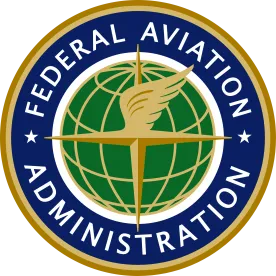On October 5, President Trump signed the FAA Reauthorization Act of 2018 into law. The Act funds the FAA through 2023 and does not include the controversial proposal to privatize US air traffic control, proposed restrictions on "flag of convenience" carriers or further restrictions on aircraft registration procedures. The Act, however, includes three notable sections that prohibit mobile phone in-flight communication, immunize lessor and passive finance parties from liability in passenger state law tort claims and address the need for airline seat size standards.
Section 403 of the Act instructs the Secretary of Transportation to issue regulations that will prohibit passengers in scheduled interstate or intrastate service from engaging in voice communications using mobile communications devices during flights. Law enforcement acting in an official capacity, on-duty flight crew and on-duty flight attendants will be exempt from the prohibition and will not apply to exclude phones installed in aircraft. The purpose of Section 403 seems to be to foster peace and quiet on flights, a welcomed passenger benefit. The Act limits the prohibition to "during a flight" and defines "flight" to include "the period beginning when the aircraft takes off and ending when the aircraft lands." This means that passengers may continue to make phone calls prior to takeoff and after aircraft have landed. The Act does not except emergency in-flight phone calls, but I would think there would be little need to codify this type of exception.
Section 514 of the Act expands immunity of passive aircraft finance parties from passenger tort liability claims by modifying 49 USC § 44112 to include injuries or damages, regardless of where they occurred, and by adding a physical possession or control requirement:
A lessor, owner, or secured party is liable for personal injury, death, or property loss or damage on land or water only when a civil aircraft, aircraft engine, or propeller is in the actual possession or operational control of the lessor, owner, or secured party, and the personal injury, death, or property loss or damage occurs because of
(1) the aircraft, engine, or propeller; or
(2) the flight of, or an object falling from, the aircraft engine, or propeller.
By removing the reference to "on land or water," Congress clarified that it intends for § 44112 to preempt state statutes that allow for vicarious liability in tort claims against passive finance parties by passengers, regardless of where accidents occur. The revised § 44112 implicitly overturns the holding of Vreeland v. Ferrer, 71 So.3d 70, 84–85 (Fla. 2011). In Vreeland, the Florida Supreme Court held that § 44112 did not preempt vicarious liability tort claims under Florida law against passive finance parties by passengers whose injuries occur in the air because § 44112, a Federal Law, was applied only to claims for damages occurring "on land or water." Furthermore, Section 514 further qualifies the level of control passive finance parties must have over the aircraft to trigger tort liability by inserting "operational" before "control." 14 CFR § 1.1 of the Federal Aviation Regulations defines "operational control" with respect to any flight as "the exercise of authority over initiating, conducting or terminating a flight." Presumably, so long as passive finance parties do not have actual possession of the aircraft, and do not have authority to initiate, conduct or terminate a flight, they should be able to avail themselves of the protections included in 49 USC § 44112.
Finally, Section 577 of the Act attempts to resolve the issues presented in the "Case of the Incredible Shrinking Airline Seat" in Flyers Rights Education Fund v. FAA, No. 16-1101 (D.C. Cir. 2017). In Flyers Rights, plaintiffs sought judicial review of the FAA's 2016 rejection of plaintiffs' petition to induce the FAA to regulate airline seat sizes for safety purposes. The Court declined to compel the FAA to promulgate airline seat standards, but remanded the petition back to the FAA for further review, instructing it to conduct a "properly reasoned disposition" of the petition and to provide the basis for its decision should it again deny the petition. Section 577 of the Act does what the Court in Flyers Rights did not; it mandates that the FAA must regulate airline seat sizes:
Not later than 1 year after the date of enactment of this Act, and after providing notice and an opportunity for comment, the Administrator of the Federal Aviation Administration shall issue regulations that establish minimum dimensions for passenger seats on aircraft operated by air carriers in interstate air transportation or intrastate air transportation, including minimums for seat pitch, width, and length, and that are necessary for the safety and health of passengers.
Section 577 establishes Congress's position that airline seat size and pitch impact passenger safety and that is the FAA's responsibility to promulgate minimum standards to protect airline passengers. Section 577's passage into law commences what will likely be an extensive rulemaking process and may raise new issues concerning grandfathering of airline seats that are currently installed in operating aircraft. It may take years for a final rule to come into effect.




 />i
/>i

